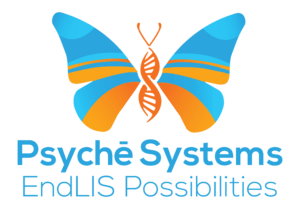Things move fast in today’s modern healthcare landscape, which means laboratories that still rely on outdated manual processes face many challenges. From the risk of human data entry errors to delays in receiving test results, these issues can significantly hinder workflow efficiency and compromise quality patient care. Modern Laboratory Information System (LIS) software provides a powerful solution to these problems, but only when designed with integration in mind.
At Psyche Systems, we understand that a successful LIS doesn’t just solve existing problems—it avoids creating new ones. If your lab is considering implementing an LIS, choose one that prioritizes seamless integration with other essential lab systems in the software design. Psyche’s medical LIS offers customizable dashboards and flexible integration capabilities, ensuring that labs can streamline operations without sacrificing connectivity. Below, we’ll explore the critical importance of interfaces in LIS software and how this feature can provide a solution that truly meets the needs of modern laboratories.
The Benefits of Seamless LIS Integration
Conventionally, good Laboratory Information software should integrate with other laboratory systems, such as electronic health records (EHRs), and instruments, such as hematology analyzers. These integrations expand the LIS’s capabilities, making it more valuable to daily operations.
Besides expanded capabilities, a Laboratory Information System that integrates seamlessly with other laboratory systems, gastroenterology, pathology, or genetic laboratories will reap the following benefits:
1. Streamlined Workflows
Integrating LIS with other systems can supercharge your lab’s efficiency, streamlining multiple workflows, including test scheduling and billing. For example, integrating your LIS with the lab’s EHR will result in quicker data entry, test ordering, and treatment planning for your staff, making them feel more productive and efficient.
Furthermore, a LIS that connects with lab instruments speeds up the process of delivering test results to doctors. As a result, patients receive diagnoses faster, leading to quicker treatment decisions and improved health outcomes.
2. Enhanced Data Connectivity
LIS interfaces interconnect laboratory instruments and systems, such as billing software, EHRs, and lab apparatus. This connectivity facilitates real-time data exchange between systems, streamlining care coordination and billing workflows.
For example, a premium LIS interface facilitates data connectivity between billing software and other lab systems. With this integration, your lab can phase out manual data entry of billing information, simplifying the invoicing process.
3. Improved Decision Making
Like any entity, labs must make decisions in their daily operations. These decisions can improve patient satisfaction, enhance test accuracy, streamline resource allocation, or improve operational efficiency.
A good LIS interface can help you expedite decision-making. For instance, some LIS interfaces can flag abnormal blood sample values based on predefined thresholds. When the LIS flags a sample, your team will know to conduct further analysis, confirm the accuracy of the results, and make a decision with confidence and speed.
Vital Considerations For Customizing LIS Interfaces
A well-customized LIS interface maximizes efficiency by enhancing workflows like data entry, retrieval, and analysis. For this reason, when customizing an interface, you should focus on getting everything set up correctly to maximize benefits.
If you do not wish to leave anything to chance, consider the following considerations when customizing your LIS interface:
1. Workflow Analysis
Professional LIS interface customization begins with a thorough workflow analysis. In this process, you’ll need to review and understand your regular laboratory processes, from test booking to sample collection and result reporting.
Mapping out these workflows gives you a comprehensive picture of your laboratory’s operation. With this information, you can pinpoint inefficient processes that need to be optimized with your new LIS.
2. Compatibility and Standards
When shopping for Laboratory Information System Software, don’t settle. Look for a product developed according to industry standards, like Health Level Seven (HL7).
Any LIS that adheres to strict standards like HL7 will be highly compatible with other systems used in the healthcare ecosystem. As such, integrating software with your laboratory systems will be easy.
3. User-Friendliness
While laboratory information system software is intended to streamline laboratory workflows, some products have confusing interfaces that can frustrate the frontline employees using them daily. Complex interfaces make navigation cumbersome, which will undoubtedly reduce productivity.
Your lab should only invest in LIS products with user-friendly interfaces. Such Laboratory Information System software simplifies navigation and enables staff to perform tasks smoothly without intensive training, making them feel understood and considered in the process.
Best Practices For Implementing Customized LIS Interfaces
Deployment is another crucial aspect that determines the value you can expect from a customized Laboratory Information System Software interface. Proper implementation ensures that your LIS interfaces seamlessly merge with existing workflows.
If you want to avoid complications during the implementation stage, use the following blueprint to ensure a painless experience:
1. Use a Phased Approach
To ensure a smooth transition and maximize the benefits of your new LIS, we recommend a phased approach to implementation. Start by connecting your most essential systems, such as the EMR and main analyzers, to ensure core workflows remain operational. Then, integrate high-priority systems that improve efficiency. Finally, connect any remaining systems. Thorough testing, staff training, and open communication are vital at each stage to ensure a seamless integration of the new LIS into your existing workflows.
2. Thorough Testing
Even the best concepts for custom LIS interfaces can end up being cumbersome or inefficient once installed in a real-world lab. Thus, before deploying an LIS software interface, it’s important to thoroughly test it to ensure it functions as expected. During testing, simulate various scenarios such as data entry, result reporting, and quality control checks to verify that the LIS interface operates correctly.
3. Change Management and Training
Like any new technology solution, your team might have difficulties adopting the customized LIS interface. The LIS interface may be a little confusing to use, or the staff may not feel ready to make such a significant change.
Thus, when making the change, make sure to leverage any training and change management processes available to make the transition easier. Explain why you think implementing the new interface will improve the lab and, as a result, make their job duties easier. Discuss and address any concerns your team may have to include them in the process.
In addition to change management, organize training sessions to help your team master the new interface. The training sessions should focus on familiarizing users with its functionalities so they can easily navigate them.
Enhance Your Laboratory Workflows With Psyche LIS Software
Investing in an LIS with customizable interfaces is one of the best ways to enhance your laboratory’s operational efficiency. A customized LIS will improve lab efficiency, accuracy, and patient care to a level that would previously have been impossible.
Psyche Systems’ LIS is a reliable solution for unlocking workflow potential. It offers customizable interfaces and seamless integration with multiple lab systems.
Schedule a free demo to experience how an LIS can enhance your lab’s workflows.

